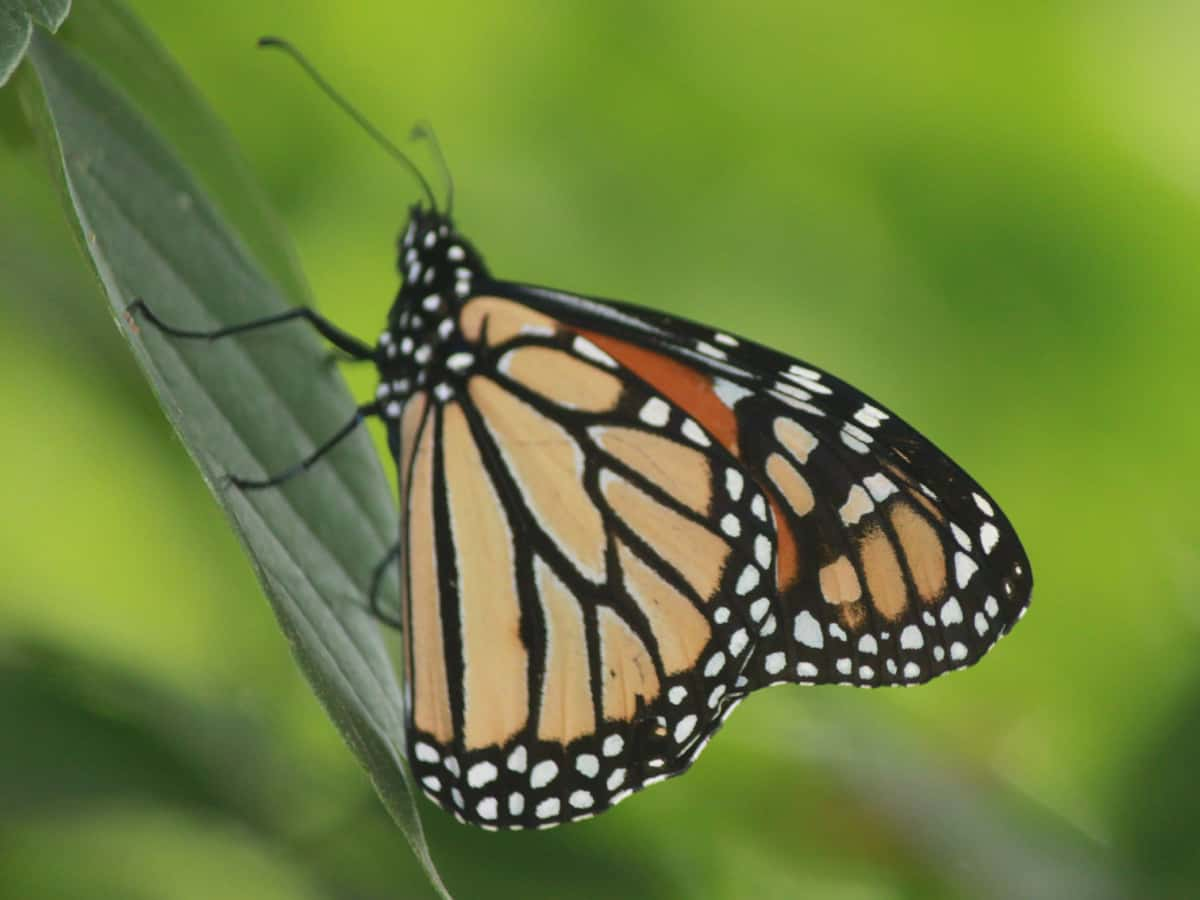
The iconic monarch butterfly is solely dependent on milkweed as its food source during the caterpillar stage of its life.
By Nick Simonson
Imagine having to choose just one food to live off for half of your life.
While I’m certain fried walleye would be a good option, or pizza would work, or even wild rice brats fresh off the grill could sustain about anyone, the hedging exhibited just in this sentence alone shows how difficult it would be. Now imagine you’re a monarch butterfly, and you don’t have a choice.
From birth through its caterpillar phase, the iconic butterfly depends on one food source for all its needs to reach its most noted black-and-orange adult appearance – milkweed.
The decline in monarch butterflies has been well noted in recent years, as over the past two decades, populations throughout North America have plummeted precipitously. As tracked by the World Wildlife Federation, in 1996 more than one billion estimated monarch butterflies overwintered in dense clusters on more than 44 acres of their historic migratory destinations in the oyamel fir forests of the limited mountainous regions in central Mexico, about 60 miles from the nation’s capital of Mexico City. By 2017, those populations dwindled to around 150 million butterflies occupying a mere 6.12 acres of their historical wintering sites in the region.
An all-time low in the organization’s tracking of the migration from northern latitudes was observed in 2013, with just 1.66 of the roughly 138,000 available acres visited by the monarchs arriving from the Northern U.S. and Southern Canada typically located east of the Rockies in a journey that begins in August each year and ends in late October.
While many factors play into the decreasing number of overwintering monarchs in Mexico, which in turn serve as an indicator of the overall population of the insect, one of the biggest is the disappearance of milkweed stands which once were abundant on the prairies, plains and other areas of North America which fostered the recruitment of the continent’s most notable butterfly species. There are 73 types of milkweed found in North America, of which 30 or so are utilized by monarch caterpillars in their early stages of life for growth and development before they form their cocoons and turn into adults.

But with the development of land and the widespread usage of herbicides such as glyphosate which have immediate and often-wide spreading effects on areas not part of crop fields, including nearby milkweed stands, these areas which served as the butterflies’ rearing grounds have decreased in recent years.
Through the efforts of conservation groups, gardening clubs, and even fans of backyard butterflies, however, the tide of missing milkweed plants may be turning to the benefit of monarchs and other pollinators who rely on the flowers for food. Whether part of a program for planting conservation areas, or simply a packet of the puffball-driven seeds handed out to gardeners and flower-tenders, efforts to reestablish milkweed on the landscape in rural, suburban and urban areas are growing and with them, hope for monarch butterfly populations rebounding in the near future.
While the expectation is to increase the options available to these insects, which make one of nature’s most incredible and arduous journeys to continue their populations, more work must be done to ensure the expansion of rearing places for their young when they return to the upper Midwest and surrounding areas each spring and summer to continue the cycle.
Through the efforts of local conservation groups creating seed packets and national organization like the Xerces Society (xerces.org) assisting in the creation of places for pollinators of all kinds, monarchs and many other species vital to the production of food, flowers and a vibrant ecological web will continue to rebound.
With the addition of milkweed to any planting, monarchs will have a place to start their annual cycle in the upper Midwest and in all regions they inhabit.
